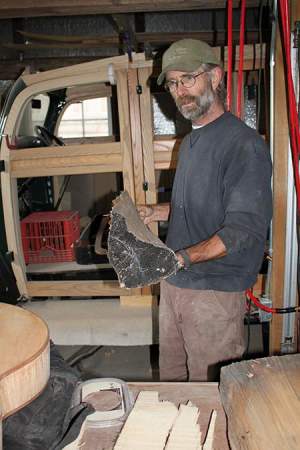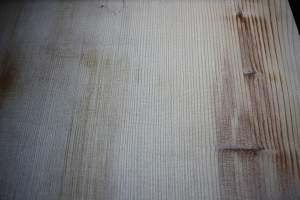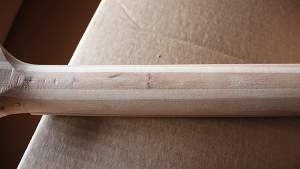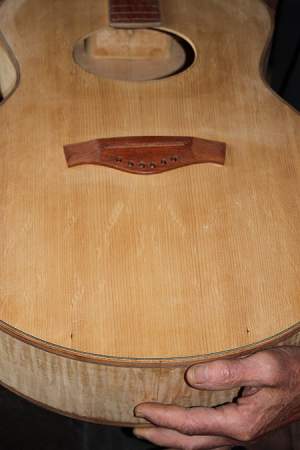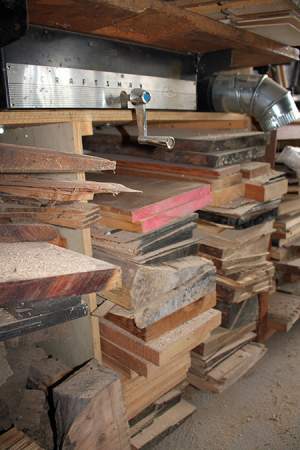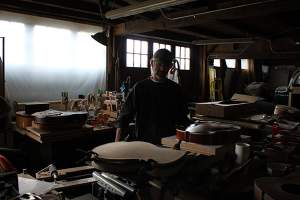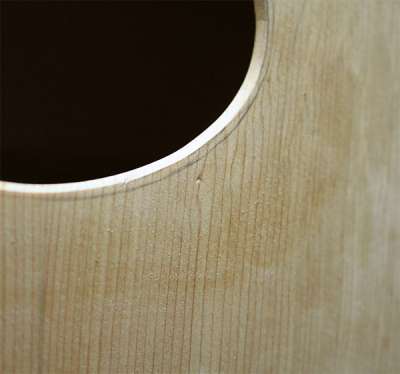
We were inspired to learn more about red spruce from an instrument-making perspective, so we visited luthier Don Wilson in Arlington, Vermont, and asked him a few questions.
Why use spruce in guitar tops?
It has the best stiffness-to-weight ratio; in this way building a guitar is like building an airplane or a racecar. You want light and strong.
How does red spruce compare, sound-wise, to other spruces?
It’s said that red has the brightest, punchiest sound of all the spruce – that’s why the bluegrass guys love it so much. Engelmann spruce [native to western North America] is softer and maybe a bit more expressive – a jazz musician or a fingerpicker might prefer this sound. Sitka spruce [found along the West Coast, and up into Alaska] is all things to all people. These generic tone descriptors are accurate to a point, but wood is never completely predictable. And guitar sound is an incredibly complex thing. Some luthiers will tell you that certain woods are the best; others will say give me a pallet and I can build you a great-sounding guitar. The argument goes on and will never be settled.
How about aesthetics?
Northern red spruce is notoriously twisty. And has pitch pockets. And usually has irregular grain. And the branches don’t self-prune, so there are often wing knots. I see these things as character, not defects, but you have to take them into account. Compare this with Sitka, which is so uniform you don’t have to think about it.
So you typically have spruce tops on guitars, but the backs and sides are made from denser hardwood species. Give us a quick 101 introduction to how different types of wood interact together in a guitar.
The primary sound coming out of a guitar has to do with the strings and what you hit them with. With an acoustic guitar, you can look at the soundboard [top] as your amplifier and the body [back and sides] as the speaker and the speaker box. The soundboard imparts volume and certain tonal properties and the back reflects the sound.
Probably if you’re a country singer singing hardscrabble songs, you’re going to want a guitar made from a tree that had a hardscrabble life on a northeastern mountain, right?
You’re referring to the voodoo in the wood, and yes, there is that. Any instrument maker will tell you there are things you can quantify about the process and things you can’t. I’m a firm believer in voodoo – it’s what makes woodworking exciting.
We’re always trying to promote locally sourced, sustainably harvested wood, and it seems very heartening that northeastern red spruce is coming back in vogue. Are you seeing a surge in interest in people who want guitars built out of local wood?
I think the Northeast Organic Farming Association, and the locavores, and the foodies, and the artistic community have done a great job in promoting this idea of how place can play a role in a product, and yes, that’s opened doors for guys like me. The terroir concept works with wine and veggies – why not guitars? I wouldn’t be able to do this if the market wasn’t receptive to paying a premium for a guitar made with local wood. And even the big companies are taking note. Martin is using cherry and birch for guitar bodies and has a whole sustainable line of guitars now.
How do we keep this ball rolling?
Educate foresters and loggers on what makes good instrument wood. The guys in the woods need to know what it is and what the value of it is. I got this red spruce here from a logger who was bringing a load of spruce to a clapboard mill and knew that I’d pay a premium for it. A lot of good tonewood ends up in a load of pulp or a firewood pile because people don’t recognize it.


